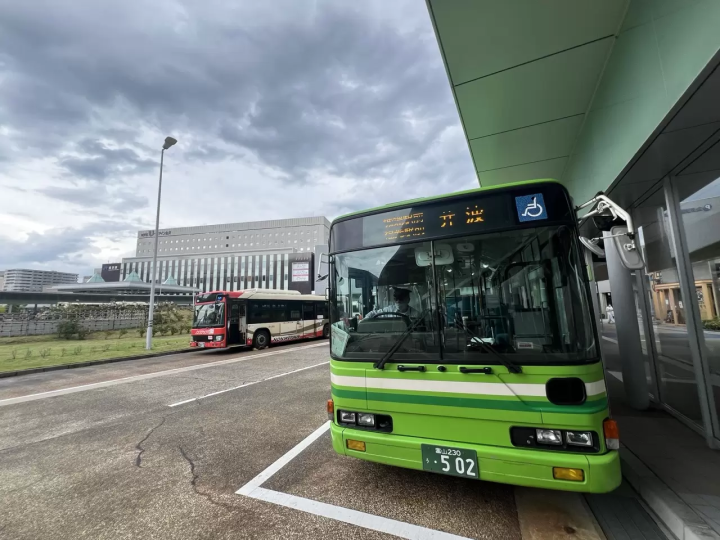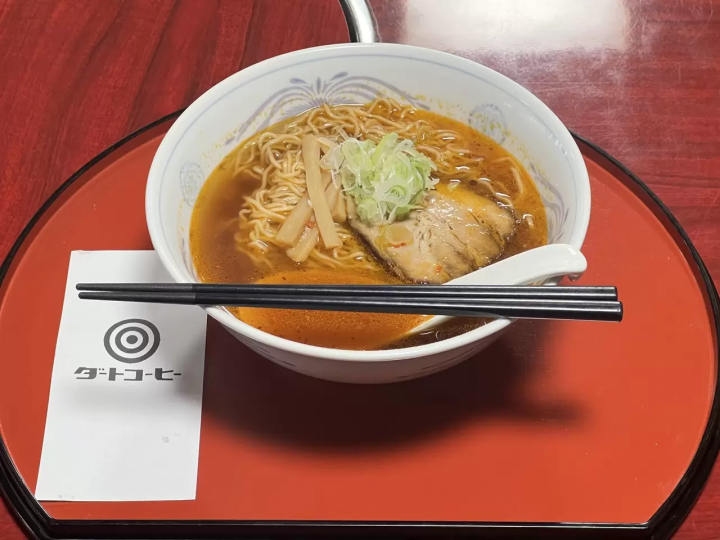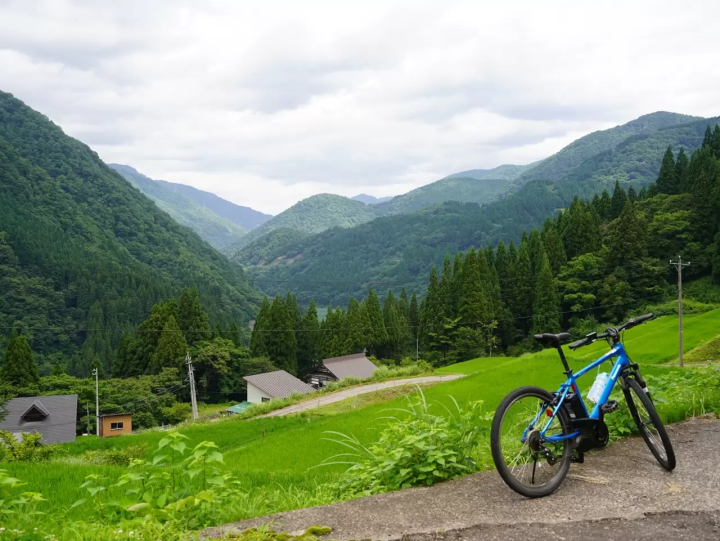[World Heritage Site] Enjoy two Gassho-style villages, "Shirakawa-go Gassho-style Village" and "Gokayama Gassho-style Village", and the sculpture town "Inami". A two-day, one-night bus trip departing from Kanazawa
![[World Heritage Site] Enjoy two Gassho-style villages, "Shirakawa-go Gassho-style Village" and "Gokayama Gassho-style Village", and the sculpture town "Inami". A two-day, one-night bus trip departing from Kanazawa](https://resources.matcha-jp.com/resize/720x2000/2024/08/01-190656.webp)
How about a refreshing bus trip to a village of traditional Japanese wooden houses called "Gassho-style"? We'll bring you a two-day, one-night bus trip that makes full use of the Nanto-Kanazawa Line World Heritage Bus Free Pass, which connects Kanazawa with Shirakawa-go and Nanto city.
2 days/1 night
A convenient bus trip to the World Heritage Site "Gassho-style Village"
As of 2024, there are 26 World Heritage sites in Japan.
This time we will be visiting one of these villages, the Shirakawa-go and Gokayama Gassho-style Villages.
There are settlements in both Toyama and Gifu prefectures, and these small villages are attractive for their pristine scenery that is unique to areas with heavy snowfall.

This time, we decided to plan a trip that would take us around the World Heritage sites by bus from Kanazawa Station, the gateway to tourism in the Hokuriku region.
We set off on a two-day, one-night bus trip in search of some nostalgic scenery!
![[World Heritage Site] Enjoy two Gassho-style villages, "Shirakawa-go Gassho-style Village" and "Gokayama Gassho-style Village", and the sculpture town "Inami". A two-day, one-night bus trip departing from Kanazawa](https://resources.matcha-jp.com/resize/720x2000/2024/08/05-191187.webp)
What is the World Heritage Bus?
This round-trip bus is operated by Kaetsuno Bus Co., Ltd. It travels a dynamic route across the three prefectures of Ishikawa, Toyama, and Gifu.
The journey from Kanazawa to Shirakawa-go takes about three hours, bringing this World Heritage site close to you.
Please see here for an overview.
From Kanazawa Station to Shirakawa-go
The start and finish point of the journey is JR Kanazawa Station. First, purchase a free pass at the information desk inside the station.

This ticket allows unlimited travel on two routes, the Nanto-Kanazawa Line and the World Heritage Bus . It is valid for three days from the date of purchase.
In addition to unlimited bus rides, this free pass also offers two additional benefits (more on this later in the article).
I actually used this benefit on the second day of the tour.
More information about the free pass here.

Upon leaving Kanazawa Station, there is a bus rotary, but with so many bus stops, it's easy to get lost.
This time I boarded from platform 2 at the port entrance.
10:21 Arrive at Johana Station
The old-fashioned tiled roof of JR Johana Station catches your eye. Here you will transfer to the World Heritage Bus.

The World Heritage Bus is a large vehicle with spacious seats. Free Wi-Fi is available on the bus.
There are no toilets on board, so we recommend using one before boarding.
11:45 Arrive at Shirakawago Bus Terminal

We passed through the mountains and headed south along the Shogawa River. The lush green scenery was soothing.
*From this point onwards, in order to preserve this World Heritage site, we ask that you please take your trash home with you.

When you get off at the bus terminal, the main entrance to Shirakawa-go is right in front of you.
We have about 2 hours and 40 minutes of free time until the next bus departs.
First, I walk down the main street to find a spot for lunch.

The shops at the entrance to the village were crowded, so I tried to find a place further back where there were fewer people.
Attracted by the red lantern, I entered a Chinese noodle shop called "Hakuraku."

I just happened to pop into this restaurant, but it was a big hit. I filled my stomach with spicy Chinese noodles.
This was my first visit to Shirakawa-go, so after lunch I decided to wander around using the information signs as a guide.
The village was beautiful no matter where you looked, and just strolling around was a fulfilling experience.

As we walked along, enjoying taking photos, we discovered a slope leading up to the observation deck.
We headed to the Ogimachi Castle Ruins Observatory, a must-visit spot in Shirakawa-go.
After walking up the hill for about 8 minutes, you will reach an observation deck with a nostalgic view of the entire village.

Although it was raining on the day of the visit, we were greeted by a fantastical landscape shrouded in mist.
We descended from the observation deck and explored the area around the bus terminal, ending our tour of Shirakawa-go.
I think you can cover all the main spots in 2 hours and 40 minutes.
We head back along the same road we came on the World Heritage bus and head to Ainokura, another Gassho-style village.
15:30 Get off at Ainokuraguchi bus stop

We walked from the Ainokuraguchi bus stop to the second observation deck of the day.
The Ainokura settlement is more compact than Shirakawa-go and has a lovely landscape.

There were few tourists on the day we visited, and we enjoyed the quiet mountain village scenery.
For the night, we stayed at the traditional and prestigious guesthouse "Yusuke."
This is a particularly large Gassho house that stands majestically at the entrance to the village.

After walking a lot, the first thing I did was refresh myself in the bath.
The fragrant wood was lovely, and it was an extremely relaxing experience that could only be achieved by renting the entire building exclusively.

The second floor is an exhibition room where numerous historical documents are displayed.
It is a rare space that conveys the history of the village to the present day.

A luxurious dinner prepared by the landlady.
All the ingredients were sourced locally in Nanto, making the food both healthy and flavorful.

Since it was a mountain village, it was very quiet at night and I was able to relax in my Japanese-style room.
More details about Yusuke here.
Enjoy active tourism in Nanto City
On the first day, we had a fulfilling time experiencing the beauty and history of the Gassho-style houses.
On the second day, in addition to visiting the spots, we also tried to incorporate a lot of activities.

When I woke up in the morning, I had some time before the bus was due to depart so I went for a short walk.
The shade of the trees was cool and comfortable, and I was able to feel refreshed by forest bathing. Once you step inside, you can enjoy the ultimate forest bathing experience.
We left Ainokura village having received the power of its abundant nature.
9:37 Get off at Kaminashi bus stop
In the morning, we decided to try cycling around the Gokayama area.
First, rent a bicycle at the Gokayama General Information Center .

This is where you can use the first benefit of the free pass.
The free pass includes a free one-day rental bicycle privilege ! (Normal price is 2,500 yen)
There's no reason not to use this!
If you go out of the Gokayama General Information Center and head to the right, you will find a route that leads to another World Heritage Site, Suganuma Gassho-style Village.
If you go left, you can explore the road that continues to "Taira Roadside Station."
Roadside Station Taira cannot be reached by World Heritage bus, so I decided to go there by bicycle. I set off on a 20km round trip cycling trip to Gokayama.
This area is hilly, but the climb is easy with an electric assist bicycle. There is only one road, so you won't get lost.
On the way down, you can pick up speed in an exhilarating way.

After turning off onto a side road and continuing to climb, we arrived at a hilltop where we could see Ainokura in the distance.
This is just a road that you won't find in any tourist guide, but the view was spectacular. The Shogawa Gorge is a spectacular sight no matter where you look.

We stopped here to rehydrate and check out the souvenir shops.

Roadside Station Taira offers a hands-on Gokayama washi paper making experience and is full of crafts made using washi paper.
Although we skipped it this time, they also have the specialty "Bobera Soft Serve" made with sweet pumpkin.


When you return to the information desk, you'll receive the second benefit of the free pass.
Get an original photo book filled with Nanto scenery!
The pages are detachable postcards that can be mailed. Please take a look at the real thing.

After returning the rental bicycle, head to the restaurant "Zippensya," which is a 30-second walk from the information center.
I burned a lot of calories while cycling, so I was starving.


For lunch, I ordered the standard Gokayama tofu full course meal.
Gokayama tofu is chewy enough to be picked up firmly with chopsticks, healthy and rich in soybean flavor, making it very satisfying to eat.
The soba noodles are thinly sliced, easy to swallow, and have a distinctive fragrant flavor.
Gokayama cuisine, which has developed in a unique way from its origins in this mountain village, is a must-see attraction for any tourist.
Click here for more information about Zippensya.
After lunch, we take two buses to Inami.
Warp from a mountain village to a plains town in an instant.
13:00 Get off at Johana Station
13:11 Change to the "Nanto Kanazawa Line Bus" at Johana Station
13:31 Get off at Zuisenjiguchi Kotsu Hiroba bus stop

Inami's main street, Yokamachi Street, is lined with workshops and is a visual delight.
In recognition of its traditions, the town of Inami has been designated a Japan Heritage Site .
From World Heritage Sites to Japanese Heritage Sites, it's a truly special journey.

We tried our hand at authentic wood carving at Kurokami-an , a shop quietly tucked away in a backstreet.
Under the guidance of your teacher, you will carve a one-of-a-kind sake cup.

Since we use pre-formed materials, it is safe even for first-time wood carvers.
Using chisels and mallets, the cypress wood is carved away, sometimes boldly and sometimes delicately.


If you just keep carving without thinking, the hour will fly by. Finally, brand it and it's complete!
The faint scent of cypress in the sake cups makes for a delicious cup of tea. The wood chips left over from shavings apparently have a deodorizing effect, and can be taken home.
More details about the experience here.

Leaving Kurokamian behind, we headed to Wakakoma Sake Brewery, which faces Yokamachi Street. It's just a one-minute walk away.

Wakakoma is a famous dry sake from Toyama, and is relatively reasonably priced, making it a perfect souvenir.
Here you can sample young horse sake in a freshly carved sake cup!
Another great thing about this tour is that you can enjoy it without worrying about alcohol because you travel by bus.
Please see here for the brands we handle.

If you go all the way down Yokamachi Street, you will come to Zuisenji Temple, another symbol of Inami.
The towering mountain gate will make you sigh in admiration.


Pay attention to the intricate decoration that embodies the culture of wood carving.
Once you've finished sightseeing at Zuisenji Temple, all that's left to do is board the bus for the return trip.

We boarded the last bus, completing our approximately three-hour visit to Inami.
Cycling in the morning and wood carving in the afternoon. It was an active tour that satisfied both the body and the soul!
17:55 Arrive at Kanazawa Station End of the tour
Summary: Take your own trip on the World Heritage Bus

Looking back, I made full use of the Nanto-Kanazawa Line World Heritage Bus Free Pass and enjoyed two refreshing days.
The road to the Gassho-style village is long and far, but you can get there easily and comfortably by bus.
The unlimited rides plus perks pass for 3,800 yen is excellent value for money.
You can follow the model route in this article, or you can create your own original route.
Also, the departure times and number of trips are fixed, so it's a good idea to plan well in accordance with the bus schedule.
Just be careful not to have too much fun at your accommodation and end up missing your train!
Find your own unique journey at World Heritage Sites!
Spots introduced in this itinerary
We are promoting the charm of Nanto City, Toyama Prefecture, both in Japan and overseas. Nanto City, located in the southwest of Toyama Prefecture, is blessed with abundant nature in all four seasons, and is a place where the original Japanese landscape and good old traditional Japanese culture remain strong to this day. Gokayama, known for its Gassho-style villages, is a "living World Heritage Site" where people live with their own unique culture. The scattered villages spread across the countryside are also one of the special landscapes unique to this region. Johana, which flourished in silk weaving from the Middle Ages to the early modern period, and Inami, known for woodcarving, are filled with fragrant history and culture. Fukumitsu, where Munakata Shiko lived, Fukuno, which flourished as a market town, Iguchi, the village of camellias, and Toga, a town of theater and urban exchange, are always full of travel attractions, and the people welcome you with warm smiles.
The contents on this page may partially contain automatic translation.










































![[Coupon Available] Attention Overseas Winter Sports Fans! Nagano's Sports Depot Has Evolved](https://resources.matcha-jp.com/resize/720x2000/2026/01/05-254819.webp)
![[2 hours from Tokyo ] 10 Quiet and Breathtaking Views of Mount Fuji in Yamanashi Hokuto City , Yamanashi - Part 2](https://resources.matcha-jp.com/resize/720x2000/2025/12/16-253037.webp)
